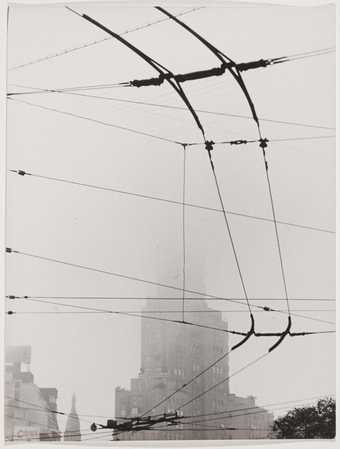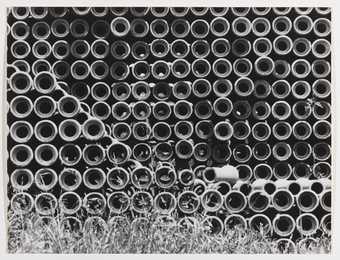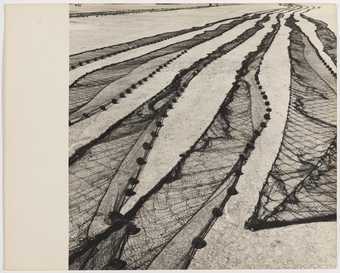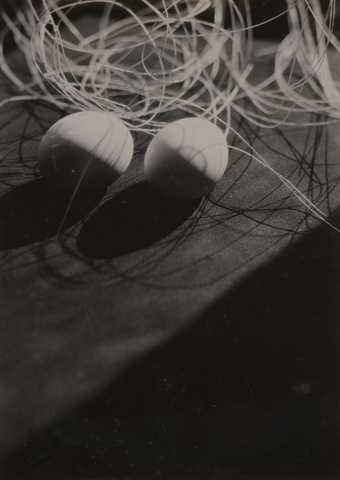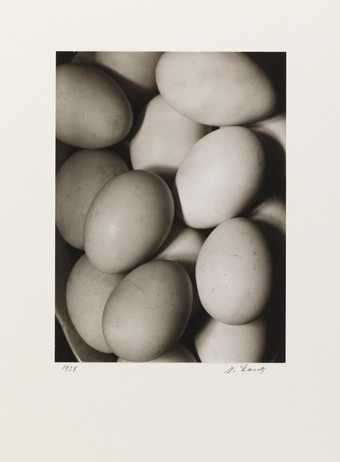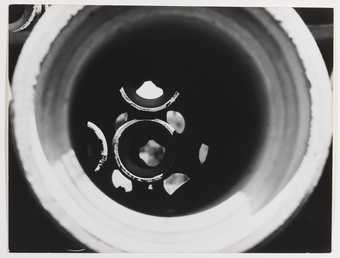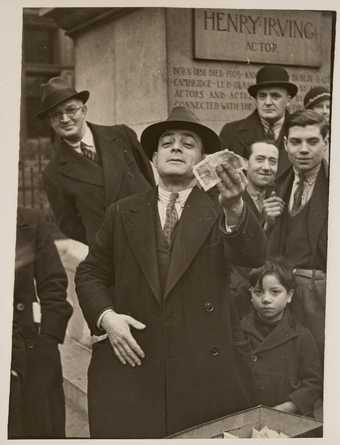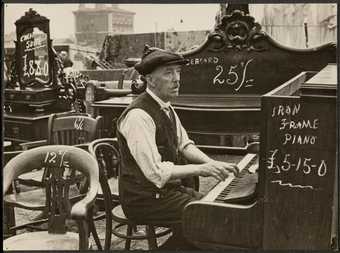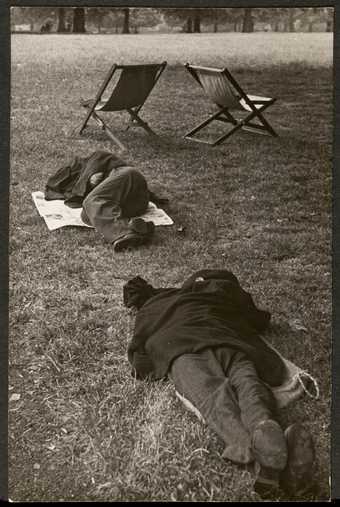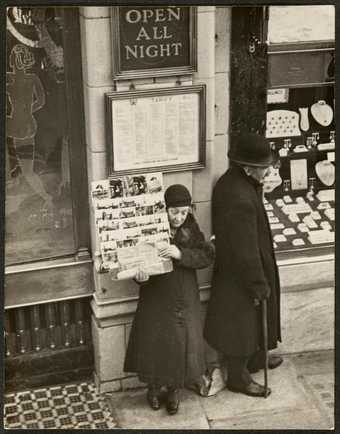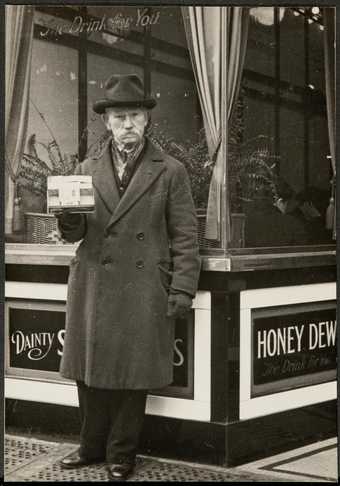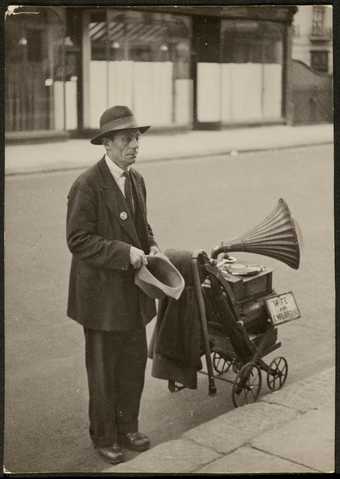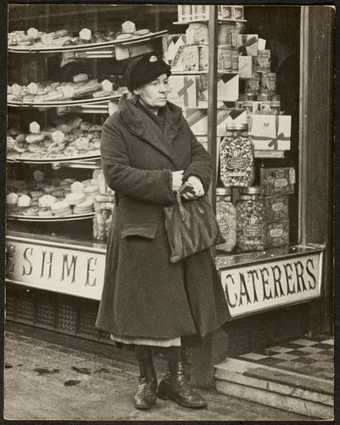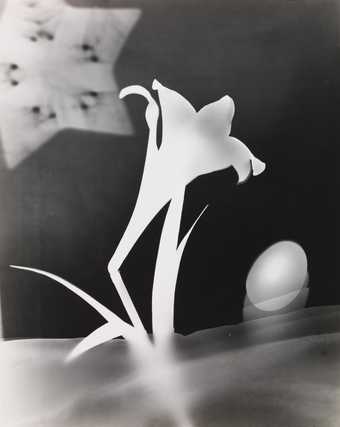
In Tate Modern
- Artist
- Horacio Coppola 1906–2012
- Original title
- Huevo y Piolin
- Medium
- Photograph, gelatin silver print on paper
- Dimensions
- Image: 235 × 282 mm
- Collection
- Tate
- Acquisition
- Presented by Michael Hoppen Gallery 2011
- Reference
- P13172
Summary
Egg and Twine is a black and white photograph taken in 1932 by the Argentine artist Horacio Coppola. An experimental study in form and contrast, it shows a white egg alongside a twisted piece of white string against a dark background of what appear to be wooden floorboards. The study is likely to have been a student exercise made during Coppola’s time studying at the Bauhaus Photography Department in Berlin, since it is inscribed ‘Berlin’ and dated 1932 on the reverse (the year the Bauhaus moved to the city). It also corresponds to similar studies made by other students which also feature an egg and twine subject. This print, which was made at a later date, has been signed by the artist on the reverse.
Coppola began taking photographs in 1926 in his home town of Buenos Aires guided by his brother Armando, who was a skilled amateur. He made similar studies of abstract and semi-abstracted form both before leaving Buenos Aires for Europe and after his arrival there. His earlier studies exhibit a formal and stylistic relationship with the aesthetics of Ultraism, a radical Spanish literary movement which established itself in 1918 and was taken up in Argentina as the basis for a more broadly based visual and literary avant-garde. This work dates from the formative years of Coppola’s career and shows him experimenting with his medium and with avant-garde ideas that were current in the early years of the century.
Such works indicate important aspects of early modernist photographic practice, and also help to trace the trajectory of Coppola’s career and development, as well as the wider exchange of modernist ideas and principles between the Americas and Europe in the early twentieth century. In 1930 Coppola had embarked on a study tour of Europe, not long afterwards publishing his photographs back in Buenos Aires in the magazine Sur (nos.4 and 5), where the Argentine writer Jorge Luis Borges was on the editorial board. In Europe, Coppola studied at the Bauhaus in Berlin in 1932–3 under the German photographer Walter Peterhans. While at the Bauhaus he also met the German photographer Grete Stern. They married in the 1930s and set up a studio together in Buenos Aires in 1937. Coppola and Stern’s return to Argentina was an important instance of the transmission of avant-garde modernist ideas and practices from one continent to another.
Coppola is represented in Tate’s collection by a number of other works, including Hampstead Heath, London 1934 (Tate P80303), London 1934 (Tate P80307) and The Drink for You… 1934 (Tate P80305).
Further reading
Horacio Coppola, Michael Hoppen Gallery, exhibition catalogue, London 2001.
Tanya Barson
May 2011
Does this text contain inaccurate information or language that you feel we should improve or change? We would like to hear from you.
Display caption
An experimental photographic study in form, materiality and contrast, Egg and Twine shows a white egg alongside a twisted piece of white string. These two bright objects sit against a dark background of what appear to be wooden floorboards. The study likely dates from the Argentinian Coppola’s time studying at the Bauhaus Photography Department in Berlin, Germany, from 1932–3, under the German photographer Walter Peterhan.
Gallery label, January 2022
Does this text contain inaccurate information or language that you feel we should improve or change? We would like to hear from you.
Explore
- emotions, concepts and ideas(16,416)
-
- formal qualities(12,454)
-
- photographic(4,673)
- tools and machinery(1,287)
-
- string(54)
You might like
-
Sameer Makarius Advertising Reflections on Building
1955 -
Sameer Makarius Kavanagh Building under the Fog
1954 -
Sameer Makarius Stack of Sewer Pipes
1957 -
Sameer Makarius Nets of Mar del Plata’s Fishermen
1956 -
Iwao Yamawaki Untitled (Composition with eggs and string, Bauhaus)
1930–2 -
Werner Mantz Title of WDR-radio programme, Cologne 1928
1928, printed 1977 -
Sameer Makarius Vision of Pipes Through a Pipe
1957 -
Horacio Coppola London
1934 -
Horacio Coppola Pianist, London
1934 -
Horacio Coppola Hampstead Heath, London
1934 -
Horacio Coppola London
1934 -
Horacio Coppola The Drink for You...
1934 -
Horacio Coppola London
1934 -
Horacio Coppola London
1934 -
György Kepes Lily and Egg
c.1939


